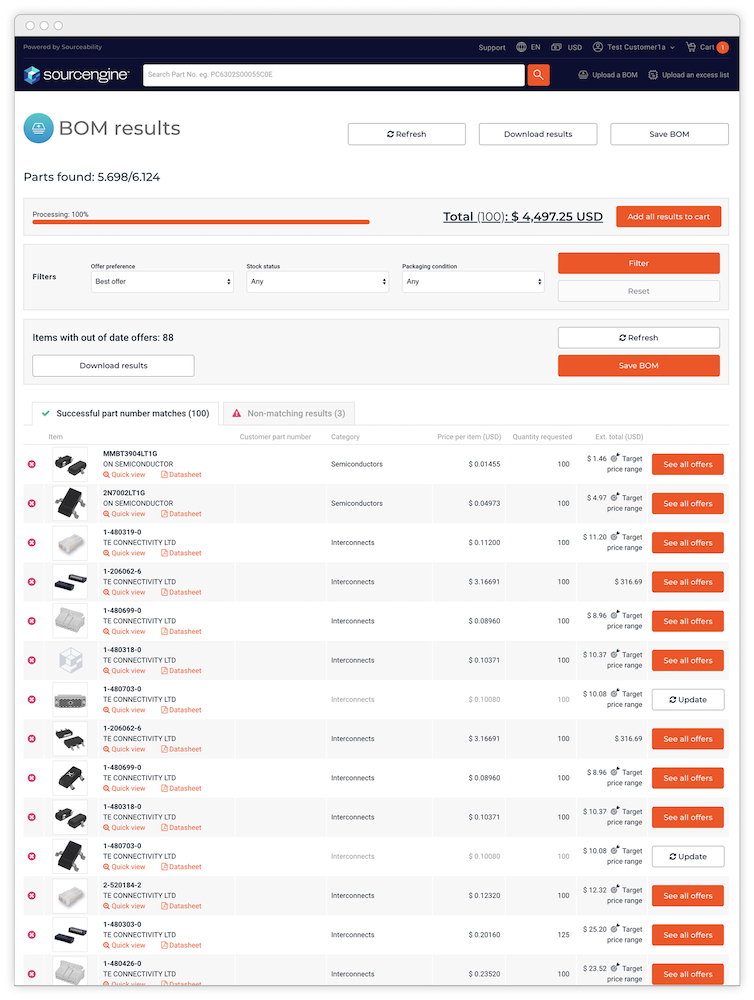
Author: Daniel Nill
Putting B2B-Commerce Front and Center
Recently, our software partner Spryker extended its e-commerce solution Spryker Commerce OS with its own B2B suite. Spryker combines all functionalities that are specifically aimed at the e-commerce needs of B2B customers. These features make it possible to meet the special requirements of the B2B procurement process – such as the organizational structure of procurement organisations or the enormous bills of materials that often have to be ordered. There’s no better point in time to give a brief overview of Spryker's new features for B2B commerce.

When we developed the Sourcengine platform for our customer Sourceability, it became necessary to jointly implement completely new B2B-specific requirements that Spryker did not yet have in its repertoire. As a result, we were at the forefront of the development of new system functions.
Purchasing in B2B as easy as in B2C
What is the B2B-Suite for? The new components in the Spryker B2B modular system are laying the technological foundation for making B2B purchasing as easy as in B2C. In the past, B2B online shops have left a lot to be desired in terms of functions and interface. This is wasted potential, since more than 80 percent of B2B buyers want a shopping experience like the one they already know from B2C.
The logical consequence: If they don't find the appropriate functions, they move on to providers who offer them the desired features and the appropriate interface. At the same time, the company's procurement organization needs to be mapped as closely as possible, for example by controlling company accounts.
Focusing on the B2B purchasing organization
The suite focuses on the B2B purchasing organization as the customer. For example, a flexible rights and roles system now allows for defining individual business units with company accounts, user roles and individual rights assignment. This makes it easier for customers to control which employees can see which products and information – and at what price they can order. If necessary, suppliers can use the new Agent Assist feature to support their customers in the purchasing process. Specifically, support staff can log in with a customer profile and even make purchases for the customer.
B2B suite promotes customer centricity
New functions help to simplify the ordering process for buyers. A re-order function allows previous orders to be executed repeatedly – or only certain products to be picked out and re-ordered. Particularly relevant in B2B: A quick order feature will accelerate orders in future by means of a direct product search based on SKU numbers – even by uploading one's own product lists. The Sourcengine, for example, shows how this works: Buyers can upload their own material lists with often hundreds of thousands of products by drag-and-drop and receive prices, offers and product information within minutes.

The suite also offers a number of new functions for shopping lists and shopping baskets. Both can now be easily shared with other users and access rights can be defined. In addition, each user can create multiple shopping baskets. Comment fields now allow notes to be taken on individual products or entire shopping carts. It is also possible to convert a shopping basket into a shopping list.
Features facilitate product management
Product management has a special significance in B2B. As a shop operator, it is now possible to determine which customer can see which articles, information and prices by means of product restrictions. In addition, graduated prices for different product volumes with different prices can now be offered, identical products can be displayed individually instead of added together in the shopping basket and suitable product alternatives can be displayed together with sold out products.
Open system architecture
In addition to B2B-specific features, the system architecture of Spryker itself is decisive for its use in B2B. Spryker is a »headless« system, i.e. it is front-end independent and therefore open for the integration of all touchpoints – whether webshop, mobile app or IoT application. Its API – called "Glue" – also allows digital ordering platforms to be integrated into existing IT infrastructures, for example connecting them to an existing ERP, CMS or PIM system. This is often the case in B2B commerce, where completely new development – that is to say, without having to take into account already established infrastructures – is the exception, rather than the rule.
Further information:

